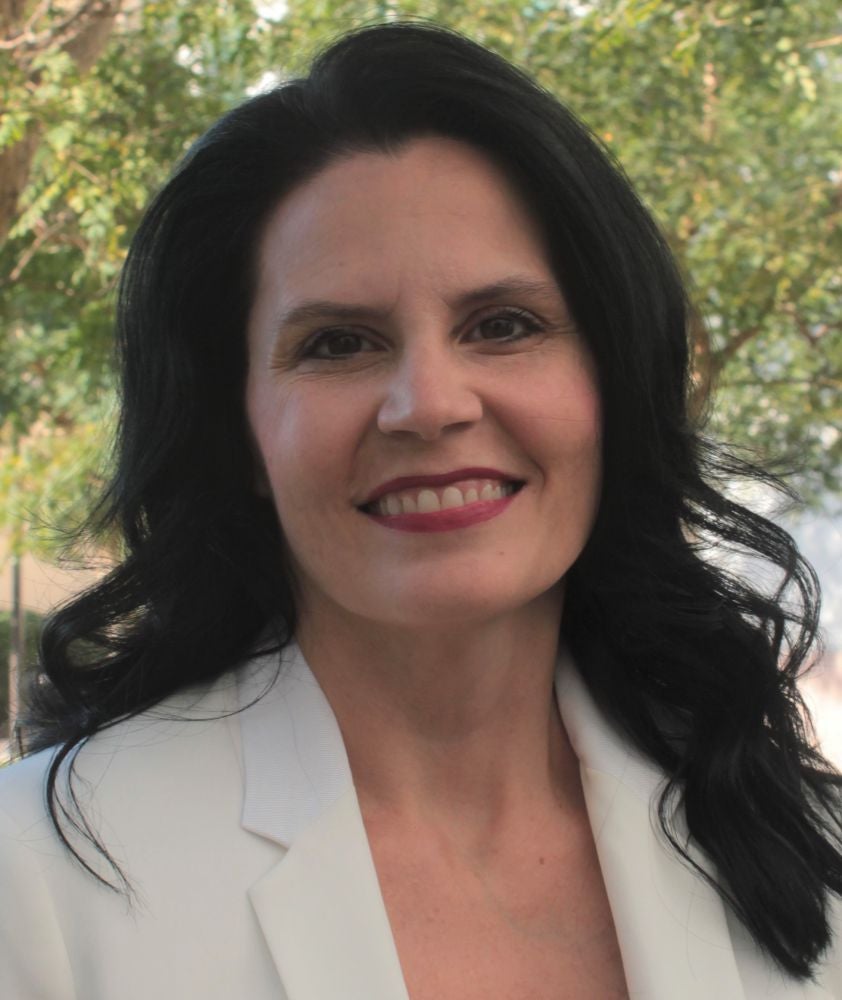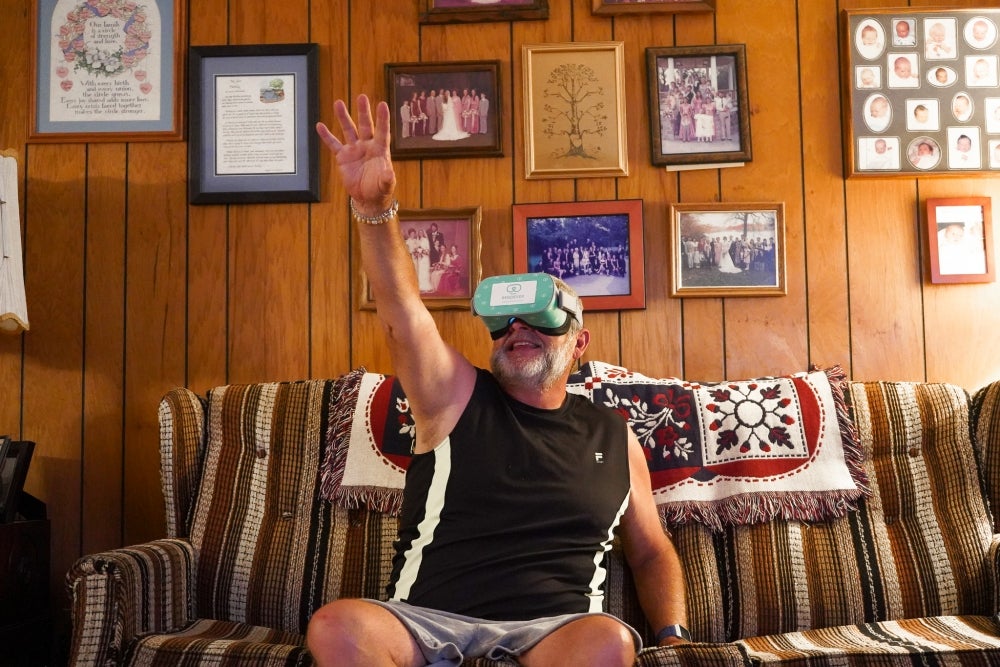
Uniting Generations


COVID life has taken a toll on us all, but it’s hit older adults particularly hard. Separated from family and friends, and less able to travel than before, many seniors have become lonely and depressed.
The pandemic struck just as UC Santa Barbara professors Tamara Afifi and Nancy Collins were conducting a pilot study to determine whether virtual reality (VR) experiences could improve quality of life for seniors and their adult children. After conducting a phase I pilot study at Maravilla, a senior living community in Santa Barbara, the team has now received $2 million from the National Institutes of Health (NIH) to begin a two-year clinical trial.
“The question here is basically, what does it mean to age successfully?” said Afifi, chair of the Department of Communication. “To me it means being able to thrive despite cognitive and physical challenges. Even someone who’s bedridden should still be able to thrive, should still be able to challenge themselves, try new things and be innovative.”
To that end, Afifi and Collins conducted a small study in 2020 with 21 pairs of Maravilla residents and remote family members — usually adult children. “The goal of the project is to test the impact of VR technology on social connection and quality of life for older adults in senior living communities as well as out-of-town family members,” said Collins, a professor in the Department of Psychological & Brain Sciences. “The long-term goal is to find ways to use innovative technologies to reduce social isolation, strengthen family bonds and improve quality of life for older adults with varying levels of cognitive impairment.”
The results showed that joint VR sessions reduced the older adults’ loneliness, while improving both their mood and their overall quality of life, the researchers said. On the family members’ side, the activity enhanced mood and also reduced caregiver guilt.
“A family is a system,” Afifi said, “so when you help one person, you’re helping the whole family.” This is especially true for caregivers, who can bear a particularly heavy burden in terms of stress and guilt.
In the pilot study, the researchers recorded seniors using the VR, capturing their body movements and expressions. They used these data — classified and annotated by humans and algorithms— in an effort to see how different stages of memory decline correlated with people’s engagement when they were using the VR.
They found that older adults with mild cognitive impairment were more kinesthetically engaged in the experience: They moved their bodies more. However, participants with mild to moderate dementia self-reported being more immersed in the experience.
“Sometimes, when you’re with someone who has dementia, you might think they’re not interested in the thing that they’re doing because their bodies might not be able to express it,” Afifi said. “But inside, they’re really excited about it; they just might not be able to show it in the way that you expect them to show it.”
Based on the pilot study’s success, the NIH granted the team funding for a two-year clinical trial. The goal is to rigorously test the social and psychological benefits of VR activities compared with standard video communication to determine if the shared, immersive experiences provide added benefits for older adults and their family members, Collins explained. The trial will include 200 participant pairs across 12 senior living communities, six in and around Santa Barbara and six in Boston, where their VR partner Rendever is located. The company’s CEO, Kyle Rand, is the project’s third principal investigator. The east and west coast teams will each collect data from one community at a time.

The father of Rendever co-founder and CEO Kyle Rand tries out his son’s invention.
Photo Credit: RENDEVER
Each pair of participants will be given a baseline survey and then randomly assigned to either a number of video calls or a series of shared VR experiences once a week for one month. The VR experiences will be similar to those in the pilot study. For instance, one session will involve reminiscence therapy. The participant will use the VR to revisit their favorite places from the past — like childhood neighborhoods or holiday spots — alongside their out-of-town family member. The researchers will conduct follow-up interviews with participants first after one month and again after three months.
The pandemic has only highlighted the importance of interpersonal connections to mental health, the researchers noted. “Even before the pandemic, loneliness and social isolation among older adults had been a national crisis,” Collins said. Conditions over the past year and a half have amplified this crisis and broadened the issue to people of all ages and backgrounds.
Collins hopes the increased exposure and urgency created by the pandemic will compel further research and action on this issue. “Now, more than ever, we need to develop creative solutions — through technology as well as other pathways — to foster social connection even when families and friends must be apart,” she said.
Communities like Maravilla were busy, social places before the pandemic, Afifi said, with all sorts of visitors and events. There’s a feeling among many of the residents that they’re still waiting for that energy to return. “The participants are really excited about doing this study,” she added. “They want their lives back.”



